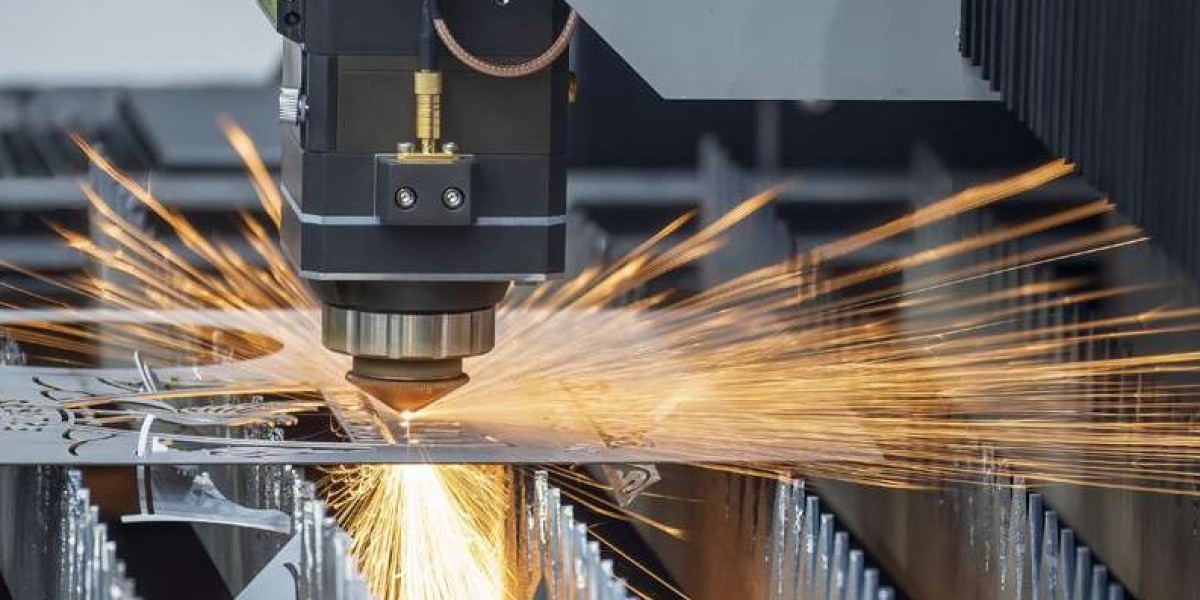Sheet metal fabrication is a critical process in manufacturing industries, transforming raw sheet metal into precise components used in everything from construction to electronics. With its versatility, sheet metal fabrication plays a vital role in creating products ranging from car body parts to ventilation systems. This article delves into the process, types of materials, tools, applications, and trends in sheet metal fabrication.
What is Sheet Metal Fabrication?
Sheet metal fabrication involves the creation of metal structures by cutting, bending, and assembling flat sheets of metal. It is a foundational technique in industries that require durable, lightweight, and precise components. The process is highly versatile, allowing manufacturers to create parts that can be customized to meet specific needs.
Key Steps in the Sheet Metal Fabrication Process
Cutting: This is the first and most crucial step in sheet metal fabrication. It involves cutting the metal into specific shapes or sizes using various techniques. Common methods include:
- Laser Cutting: A highly accurate and efficient method that uses focused light to cut through metal sheets.
- Waterjet Cutting: Uses a high-pressure stream of water mixed with abrasives to cut through thick materials without heating the metal.
- Shearing: A traditional method using blades to cut large sheets of metal into manageable pieces.
- Punching: Uses a punch press to create holes or other shapes in the metal.
Bending: After cutting, metal sheets are bent to shape using a press brake or other bending tools. This is often done to create angles, folds, or complex geometries, depending on the component’s design.
Assembling: After individual parts are fabricated, they are often assembled together. Techniques such as welding, riveting, or fastening are used to join pieces and form the final product.
Finishing: Once the metal parts are assembled, finishing techniques are employed to improve the aesthetics, durability, and functionality of the product. Common finishing methods include powder coating, painting, anodizing, and polishing.
Materials Used in Sheet Metal Fabrication
Several metals are commonly used in sheet metal fabrication. The choice of material depends on the desired properties, such as strength, corrosion resistance, and weight.
- Steel: One of the most commonly used materials, steel is strong, durable, and cost-effective. It is often used for structural components and machinery.
- Aluminum: Lightweight, corrosion-resistant, and malleable, aluminum is often used in the aerospace and automotive industries.
- Stainless Steel: Known for its corrosion resistance and high strength, stainless steel is often used in industries such as food processing, medical devices, and kitchenware.
- Copper: Known for its excellent electrical conductivity, copper is often used in electrical components and wiring.
- Brass: A copper-zinc alloy, brass is used for decorative elements and components that require corrosion resistance.
Applications of Sheet Metal Fabrication
Sheet metal fabrication finds application in various industries, including:
Automotive Industry: Car manufacturers rely heavily on sheet metal fabrication for creating body parts, chassis, and other structural components.
Aerospace: Precision fabrication is critical in the aerospace industry, where light and strong components are needed for aircraft bodies, interiors, and engine parts.
Construction: Sheet metal is used in roofing, siding, gutters, HVAC systems, and structural supports in buildings.
Electronics: From computer casings to phone enclosures, sheet metal is widely used in the electronics industry to protect sensitive components.
Consumer Products: Many household appliances, such as refrigerators, ovens, and washers, incorporate sheet metal components in their construction.
Benefits of Sheet Metal Fabrication
- Precision: The ability to cut, shape, and assemble metal with high accuracy makes it suitable for manufacturing complex and detailed parts.
- Durability: Sheet metal products are robust and long-lasting, capable of withstanding harsh environments and wear over time.
- Cost-Effectiveness: Compared to other manufacturing processes like casting or forging, sheet metal fabrication is relatively affordable, especially for high-volume production.
- Flexibility: Fabricators can easily modify designs during the production process, allowing for customization and quick prototyping.
- Efficiency: Modern technologies, such as laser cutting and CNC (Computer Numerical Control) machines, allow for fast and precise production.
Emerging Trends in Sheet Metal Fabrication
As industries evolve, so do the techniques and technologies in sheet metal fabrication. Some of the latest trends include:
Automation and CNC Machining: Automated systems and CNC machines have significantly improved the speed and accuracy of sheet metal fabrication. These systems can reduce human error and increase production efficiency.
3D Printing for Prototyping: While 3D printing is not traditionally part of sheet metal fabrication, it is increasingly being used for rapid prototyping of parts before they go into full production.
Sustainability: With growing concerns about the environment, the demand for more sustainable fabrication practices is rising. Recycled metals and eco-friendly coatings are being used to reduce the carbon footprint of sheet metal fabrication.
Advanced Laser Cutting: Laser cutting continues to advance, with improvements in precision, speed, and the ability to cut thicker materials more effectively.
Conclusion
Sheet metal fabrication is a cornerstone of modern manufacturing, offering high precision, flexibility, and durability for a wide range of industries. From cutting and bending to finishing and assembly, the processes involved ensure the production of components that meet the highest standards. As technology advances, so too does the potential of sheet metal fabrication, ensuring that it remains an essential part of manufacturing for years to come. Whether in aerospace, automotive, or consumer goods, sheet metal fabrication helps bring ideas to life with precision and efficiency.








